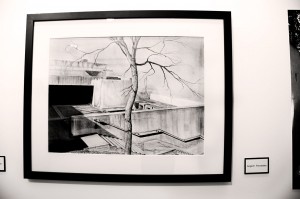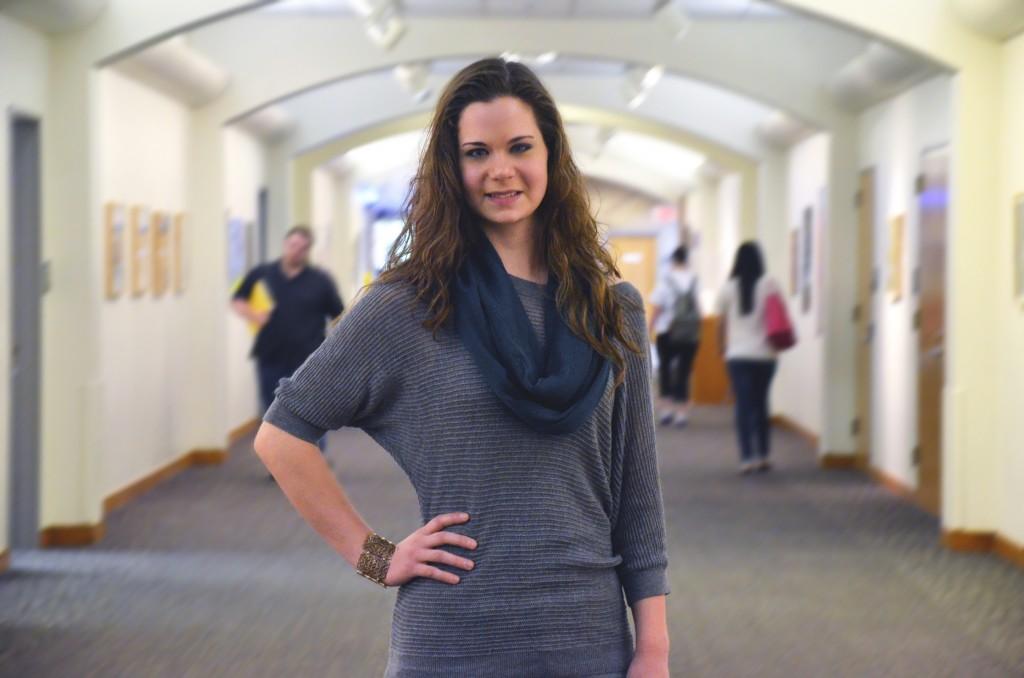
By Kirsten Mahon/tr news editor
In the new exhibit Interconnected Endeavors, TR art students and student researchers have combined their works in the Waterfall Gallery on TRE Campus.
The gallery had its grand opening April 18 with students and faculty members celebrating the history of Fort Worth.
Students selected endangered historic sites of Fort Worth to draw and research. Sites like Thistle Hill, Will Rogers Coliseum and the Fort Worth Power and Light plant are featured in the show. The artwork of the students is accompanied with a photo of the site and the research reports.
Angel Fernandez, TR art associate professor, helped curate the show. He said the project was to accompany a service learning focus for students. The project also falls in line with a TR Campus hallmark based on interdisciplinary collaboration that mixes learning in the traditional classroom with real-life experiences across a multitude of broad subjects.
The idea came to Fernandez after visiting the historic McFarland House in Fort Worth, he said. After seeing the history behind the property, Fernandez saw a need to highlight other similar sites that were losing attention in modern times.
“It’s a cycle,” he said. “Places like the Fort Worth Power and Light plant was the cutting edge when it was built.”
According to the students’ research done for the exhibit, the plant is now on Historic Fort Worth’s “Most Endangered Places” list.

Fernandez said the TRE Campus building is one of the cutting edge buildings of Fort Worth today.
“Where will it be in 100 years?” he said.
During the grand opening, author Debbie Liles signed copies of her book Will Rogers Coliseum, Texas. The photo biography covers the history of the site.
Elizabeth Gonzalez said the students selected were given their choice of sites to draw. She chose Thistle Hill, a mansion built in the early 1900s, after seeing it on a field trip. Students found that it was built by wealthy cattleman W.T. Waggoner as a wedding gift to his daughter Electra Waggoner.
“There was so much detail,” she said. “It took about eight hours. I was one of the only students to turn it in on time.”
TR student Canh Van Tiet said his drawing of Will Rogers Coliseum took him 12 hours over a couple sittings to complete.
“We did have to go out there and observe to take a closer look at the beauty,” he said. “I picked this one because it stood out to me.”
Trek said the students took pictures to get familiar with the sites they’d chosen after observing them.
“The compliments I get are the ones that really prompted me to spend all the hours on the work,” he said.
Fernandez said that drawing the historic sites helped the buildings come alive for the artists and viewers. Learning about the origins of the building helps the students understand a slipping value of historic Fort Worth, he said.
“When you learn about it, you wonder, why isn’t it being cared for?” he said. “Historic Fort Worth has a need to make the greater community aware of the architectural story.”
The gallery is expected to feature the artwork and research of students indefinitely.



























